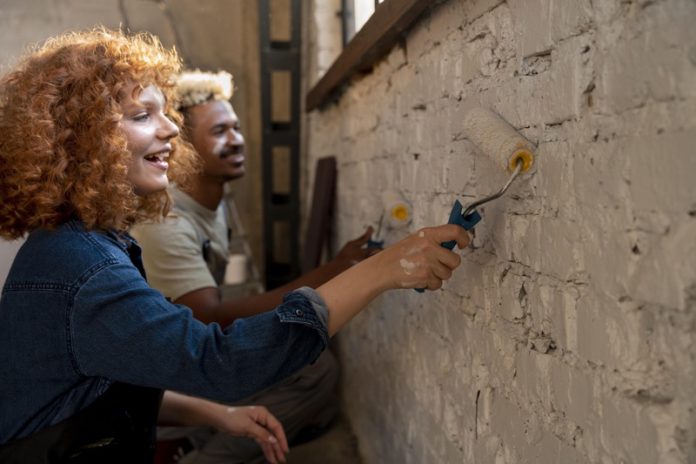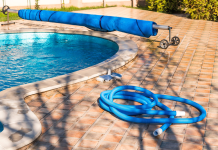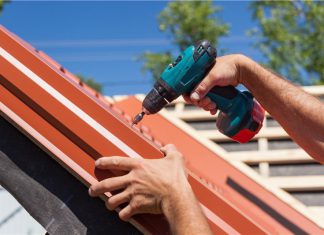Painting brick walls is an effective way to give your home a fresh new look, but over time the paint may start peeling or flaking off, leaving your brick looking dull and unsightly.
While removing paint from brick may seem like a daunting task, with the right tools and techniques you’ll be able to complete the task successfully and efficiently.
In this guide, we’ll go over step-by-step how to effectively remove paint from brick
Why Remove Paint From Bricks?
There are several reasons why you might wish to remove paint from a brick wall. Perhaps the paint is peeling or fading and detracting from the overall aesthetic of your home, or you want to restore its natural beauty by revealing its original texture and color.
Whatever the case may be, selecting an appropriate method for taking away the paint is critical to protect both the brick itself and any nearby areas from further harm.
Tools and Materials Needed
To remove paint from brick, you’ll need a few basic tools and materials:
Paint Stripper
When selecting a paint stripper for brick surfaces, opt for one specifically designed to work on masonry surfaces. There are various types of strippers available; however, when working with brick you’ll want to choose an effective product designed specifically for this task.
Scraper
A scraper is essential for scraping away paint after it has been softened by the stripper. Opt for a scraper with an extended blade for maximum coverage.
Wire Brush
A wire brush can help scrape away any remaining paint or residue from brick surfaces.
Protective Gear
Paint strippers can be hazardous chemicals, so it’s essential to wear protective equipment like gloves, goggles, and a respirator mask when working with them.
Water and Bucket
Once the paint has been scraped away, you’ll need water to rinse the brick surface.
Steps for Removing Paint From Brick
Here are the steps for removing paint from the brick:
Step 1: Prepare the Area
Before beginning, cover any nearby plants, shrubs, or other surfaces you want to protect from the paint stripper. Lay down a drop cloth or plastic sheeting to catch any drips or spills.
Step 2: Apply the paint stripper
Follow the directions on the container to apply it to brick surfaces. Depending on how thick the paint is, you may need to apply multiple coats.
Step 3: Wait for the paint to soften
Once you apply the paint stripper, you must wait for it to penetrate the paint. This may take anywhere from 15 minutes up to several hours, depending on the product and thickness of the coat.
Step 4: Scrape away the Paint
Utilize a scraper to gently scrape away softened paint from the brick surface. Be sure to work carefully, taking care not to scratch or gouge the brick.
Step 5: Scrub With a Wire Brush
After you’ve scraped away as much paint as possible with the scraper, use a wire brush to scrub away any remaining pigment or residue.
Step 6: Rinse the surface thoroughly
Utilize a bucket of water and either a sponge or hose to thoroughly rinse away paint stripper residue or traces. Be sure to thoroughly remove all traces of this product.
Step 7: Repeat if Needed
Depending on the thickness of the paint and the effectiveness of your paint stripper, you may need to repeat this process several times to completely remove the paint.
Step 8: Clean Up
Dispose of any used paint stripper and other materials according to local regulations. Clean your tools, and protect your skin, eyes, and respiratory system by wearing protective gear such as gloves, goggles, and a respirator mask.
Tips for Success

- Always test the paint stripper on an inconspicuous area before using it on a large section of brick.
- Work carefully to avoid damaging the brick or surrounding areas.
- Utilize either a wire brush or scrub brush when working in tight places or corners.
- Maintain the surface wet with a paint stripper while it is active.
- Rinse thoroughly with water after the paint has been removed.
- Dispose of any used stripper and other materials according to local regulations.
*Consider hiring a professional painter assist you with your project
Conclusion
Removing paint from brick can be a tedious task, but with the correct tools and materials, it’s achievable safely and effectively.
Be sure to wear protective gear such as gloves, goggles, and a respirator mask for protection from harsh chemicals. Follow the steps above for best results; always test small sections first before tackling larger ones.
With patience and great attention to detail, you should be able to restore your brick surface to its original condition – good luck!














